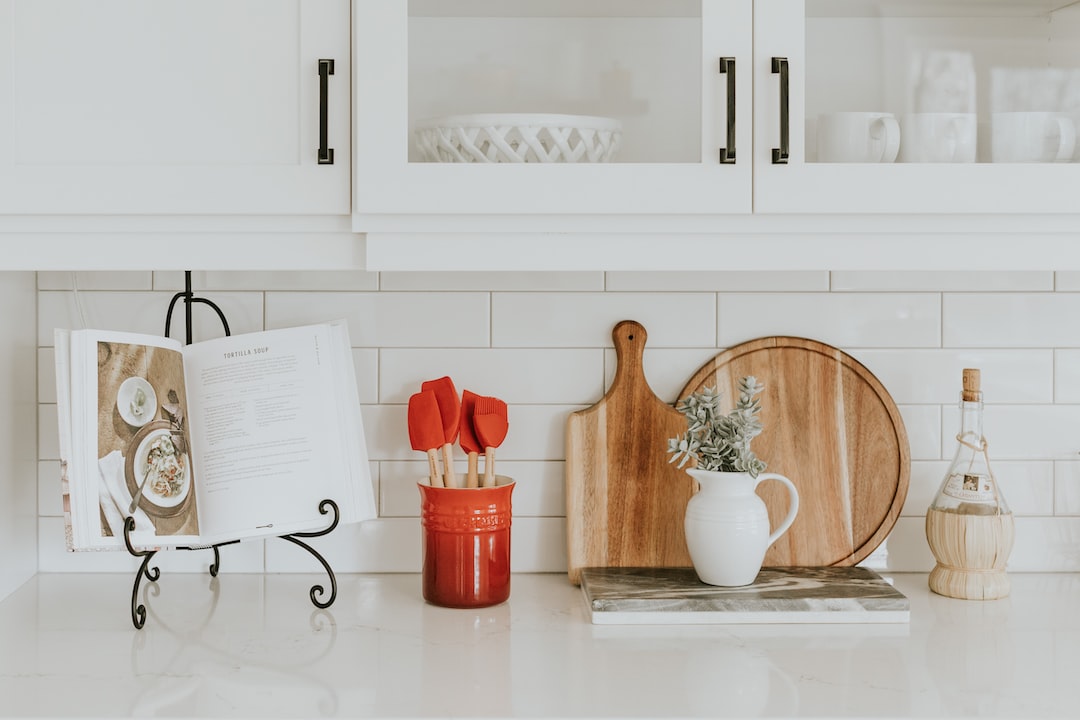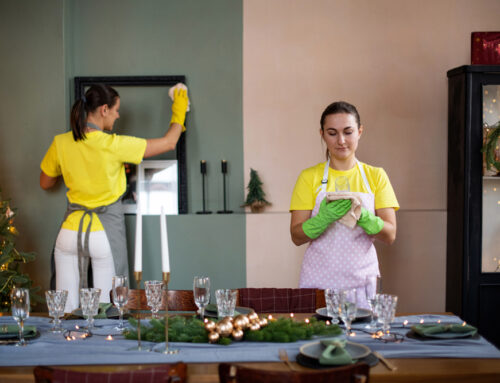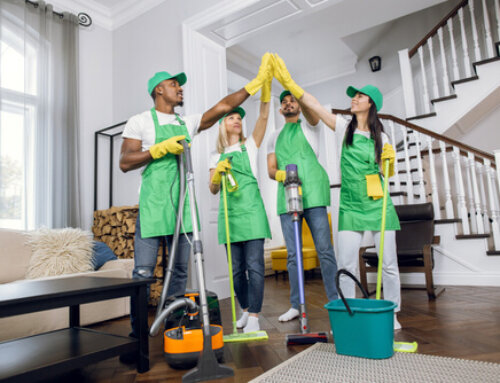Did you know that one in every 25 containers of chicken is likely contaminated with the salmonella virus?
Salmonella is just the beginning of the bacteria that reside in your kitchen. Cleaning kitchen counters well after preparing chicken is just one of many steps to protect your health and maintain an orderly house. It should come as no surprise that there are many other kitchen cleaning errors you could be making during your kitchen cleaning routine.
It’s not just about buying the right kitchen cleaning supplies. That’s why we’re here to help.
Keep reading for seven kitchen cleaning errors you might be making and how to avoid them.
1. The Biggest of All Kitchen Cleaning Errors: Cleaning in the Wrong Order
This might seem like a small thing, but it makes a big difference. Many people clean in the order that is most convenient. This is especially problematic when you clean above the counters.
A common mistake is to dust after you’ve done all your regular cleaning. Unfortunately, this means that all of that dust drifts down and collects on your newly cleaned counters and appliances. Some of that dust may contain rat feces, which presents a considerable threat to your health.
This also can make cleaning more inconvenient for you. If you are cleaning off the counter, some of the crumbs make it onto the floor. If you’ve already finished cleaning kitchen floors, then this only gives you more unnecessary labor.
2. Using the Same Cleaning Implements on All Surfaces
Chances are you have a trusty rag or sponge. That rag does the dusting as well as cleaning off the countertops. It may have even wiped out toilet bowls and bathroom counters.
It’s a good idea to keep your bacteria separate, especially when cleaning surfaces that food comes into contact with. Use clean, washed rags or sponges when cleaning. Avoid cross-contaminating by using the dusting rag as the counter rag.
Bacteria love the wet fibers of a rag. This provides them with the optimal breeding grounds to spread. As you wipe other surfaces, you transfer bacteria from one place to another.
Soak rags in bleach or other high-strength cleaning solutions. Then run them through the washer a couple of times, but avoid washing them with clothes. Let them dry out fully before using them again.
3. Cleaning Any Hot Pans or Parts
There’s nothing wrong with cleaning as you go. It saves you work later on by taking care of the cleaning as you cook. However, give your pans and pots some time to cool down before you run cold water over them.
While your pans and pots are tempered and can withstand extreme temperature changes, you shouldn’t drastically change that temperature. Going from the heat of a stove to lukewarm water can damage your pans. While it may not break them, it can warp them or reduce their heat conduction effectiveness.
Even with hot water from the tap, the temperature difference is very great. Just play it safe and wait for your pots and pans to cool before you clean them. It’s a small step that can increase their longevity.
4. Clean Cutting Boards Incorrectly
Most people either toss their cutting boards in the dishwasher or wash them by hand with soap. Neither of these is a good idea. They will not kill the bacteria that poses the greatest threat to you.
Instead, use a watered-down bleach solution. You can also use hydrogen peroxide or white vinegar. Soak the board in the solution for at least a couple of minutes, then make sure to rinse it off and give it a proper drying.
5. Failing to Clean Your Dishwasher
It may seem counterintuitive. The dishwasher is where dishes go to get cleaned, after all. But the dishwasher can begin to harbor bacteria even with its hot temperatures and frequent exposure to soap.
Bacteria can linger in crevices, leading to that bad dishwasher smell. Make sure to air out your dishwasher out after every wash.
Every few months, scrub the inside with baking soda, vinegar, or bleach to kill any remaining bacteria. Give your dishwasher a cycle to wash out the residue and then continue washing as normal.
6. Cleaning Your Countertops Poorly
Countertops are the most important thing to keep clean and disinfected. This is where all your food comes into contact before you consume it. It’s the perfect place for safe food to pick up some nasty bacteria.
Clean your countertops with clean rags and a kitchen-friendly solution. Using the wrong chemicals can also make you sick, just like bacteria. If you cook with chicken, eggs, or meat, make sure to scour your countertops with bleach.
If you stand on your countertops to clean the cabinet tops, don’t forget to clean them again. Even if you are barefoot in a clean house, still make the effort to clean them.
7. Neglecting the Kitchen Sink
Your kitchen sink often gets the most exposure to bacteria, far more than your countertops. This is where you wash your vegetables and your hands. Food waste goes into the garbage disposal and can rot in the process.
Not only should you keep your kitchen sink clean, but you should also do regular deep cleaning. This will reduce any odors and kill any potential mold growth. Use kitchen cleaners and bleach to scrub the inside of the bowl.
Don’t neglect your garbage disposal as well. You can use a mixture of baking soda, lemon slices, and ice cubes to clean it. This will likely reduce that persistent, filthy garbage disposal smell.
Hire a House Cleaning Service
Even people who spend most of their time in the kitchen are prone to these kitchen cleaning errors. The kitchen can harbor all sorts of nasty bacteria that can make their way into your food. Taking the time to clean your kitchen properly can spare you and your family from any foodborne illnesses.
Cleaning a kitchen can be backbreaking work, especially after you have already spent an afternoon or evening preparing a meal. Why not hire a home cleaning service to take some of the load off your shoulders? Request a free quote and we’ll make your kitchen sparkle.





